
March 07, 2023
What is a Product Development Roadmap? A Comprehensive Guide
By 2030, the product design and development services market is anticipated to grow at a CAGR of 12.5 percent, reaching USD 24.1 billion. However, entering this industry is daunting. With some internal issues, such as design and production, product companies face increasing challenges in bringing high-quality, cost-effective products to market more quickly.
According to Deloitte, having a decent idea for product development can only get you so far.
Can ideas and the products built on them easily fail? Yes, unless they have the necessary management and attention when competition pressure and shifting market conditions overwhelm an organization's capacity to expand and adapt.
Companies must constantly create, improve, and release digital products to keep their businesses growing and remain competitive in the ever-changing digital world. It might be pure guesswork without critical product development best practices in mind to scale successfully and deliver top-notch user experiences. This is where the product development roadmap comes in.
How to create a product development roadmap? This article will explain the product development roadmap, how it differs from the product roadmap, why it is essential, how to create it step-by-step, and introduce the best roadmapping tools.
You will also learn about Artkai, an award-winning full-cycle product development company, and our expertise in product development roadmapping based on our case studies, such as Procredit, Coinloan, Cruitment, Huobi, Nezha, and DTEK.
What Does the Product Development Process Look Like?
Product development includes everything necessary to bring it from conception to market. This comprises determining a market need, studying competitors' landscape, envisioning a solution, creating a product roadmap, creating a minimal viable product, etc. Developing a well-though-out product development strategy ensures seamless product development process.
Product managers often act as the strategic driving force behind this process because they are ultimately accountable for the success or failure of the company's goods. Yet, this procedure is more than just a product management task. Many teams within an organization must collaborate on and contribute to product development, including engineering, design, marketing, sales, finance, and testing.
The strategic directors of the development process are product managers. They assemble the cross-functional team, oversee team development, and convey the overall goals and plans for the product (via the product roadmap).
Several frameworks are available to assist companies in organizing their product development process. The design thinking framework is a well-known illustration. Another example is the fuzzy front end (FFE) approach. Despite providing flexibility in how an organization might arrange and prioritize these processes, this framework highlights the general stages of development.
- Identifying design criteria
- Idea analysis
- Concept genesis
- Prototyping
- Product development
Why Roadmap is Important for Product Development
Developing a product is a complex process. It involves numerous phases and multiple stakeholders across the company, including dependencies between these units. The cross-functional team must also regularly review its progress to ensure they are still implementing the plan. The creation of new products requires ongoing dialogue.
Because of these factors, businesses should keep a software product development roadmap as a centralized tool for tracking and referencing everyone's strategic involvement. A new product development roadmap is a list of the tasks and deadlines to meet before launching a product.
Teams, stakeholders, and executives can see a visual representation of a strategic plan highlighting the critical actions needed to achieve the target result when they consult a product development roadmap. The essential advantage is that it enables development teams to be aware of who participates, what has to be done, and their progress over time.
Product roadmaps are simple and useful, and enabling enterprises to predict the level of success of their products. Over time, this aids them in making the most use of their resources and time. You can review enterprise applications examples in our article on the topic. The following benefits are also associated with developing a product development roadmap:
- Monitoring progress
- Increasing transparency inside a company
- Aiding teams in organizing their resources and actions
- Connects the goals of the teams with those of the products
- Supplying a framework with the actions and guidelines needed to achieve the intended results
- Facilitating the participation of stakeholders
Artkai Expertise in Product Development Roadmapping
We are an award-winning full-cycle product development company Artkai. We create beautiful digital products using the best practices for product development roadmapping. Our product design services assist clients in growing their user base and revenue sources and guide your product to success.
Artkai analysts will help you validate your business idea by comparing it to the market. Then, we will aid you in deciding how to connect a vague concept with a finished digital product. Leverage Artkai's knowledge to create the best product development roadmap and understand the behavior of your target users and the market landscape.
We ensure every product we create benefits consumers and businesses. Read more about the products that we build in our guide “A Roadmap to developing a top-notch business application”.
Web and Mobile Internet Banking for ProCredit Georgia
The client requested that ProCredit Bank go entirely digital. Creating an app should have reduced the burden on contact center workers and employees of physical branches while highlighting ProCredit's financial advisory services.
Building a Product Development Roadmap
- Setting a Clear Goal for Product Development: The goal was to improve the usability and accessibility of present capabilities by enabling bank customers to sign up for and use new services online.
- Assigning Tasks to Teams: Two UI/UX designers, three front-end engineers, a project manager, a business analyst, and a QA engineer made up the project team.
- Frequently Monitoring and Updating the Roadmap: Research and design took 4.5 months, while development and quality control took seven months.
- Adjusting Plans and Priorities as Needed. After the research and discovery phase, our team concurrently designed and developed the product.
- Starting with a Product Development Roadmap Template. The team has used the following product development roadmap template to visualize the product development process.
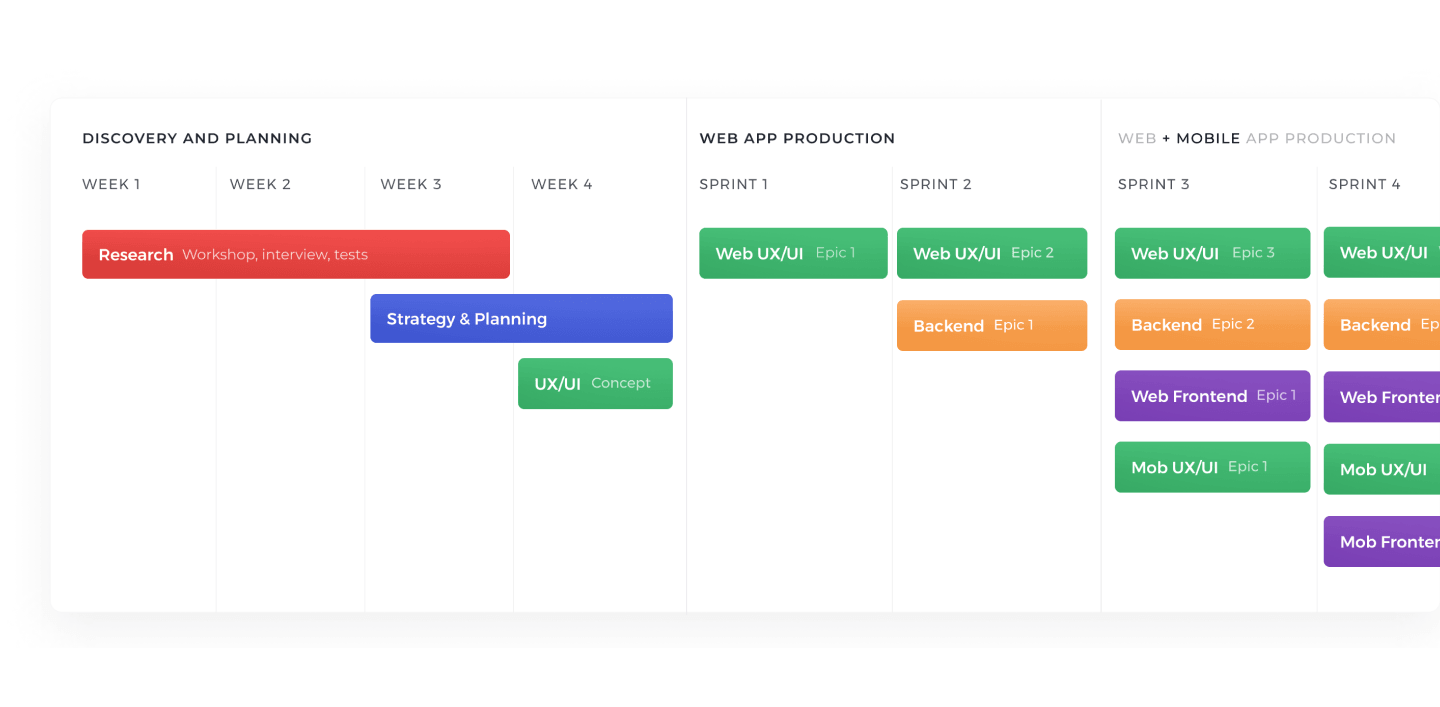
Project Outcomes
Our team redesigned the mobile banking app with integrated video identification tools for bank account registration, the My Finances section, onboarding, and smart login. We also constructed web banking with a dashboard and quick access navigation. Our efforts had a notable effect:
- Online access to banking services has reached 99 percent.
- Transferring money online or through a mobile banking app takes only half as long.
- Via a mobile banking app, banning a card now happens 60% faster.
- The mobile app logs events twice as quickly as the previous version.
Web-based P2P Lending Platform and Marketing Website
The first marketplace-based crypto-to-fiat lending platform, Coinloan, set out to develop a web-based P2P lending platform with a contemporary crypto-related design. The platform's user interface should be straightforward, open, transparent, and secure. The customer also wanted to create a user-friendly and attractive marketing website to promote the platform.
Building a Product Development Roadmap
- Setting a Clear Goal for Product Development. To attract financial experts and enthusiasts to the first marketplace-based crypto-to-fiat lending platform.
- Assigning Tasks to Teams. Artkai's team of two UI/UX designers, two front-end engineers, one QA engineer, one project manager, and one business analyst worked on the product.
- Frequently Monitoring and Updating the Roadmap. The team spent two months on research and design and four months on development and QA. We discovered the stakeholders' needs, expectations, and KPIs throughout the research phase.
- Adjusting Plans and Priorities as Needed. We carried out the design and development phases concurrently after the research and discovery stage.
- Starting with a Product Development Roadmap Template. The team used a product development roadmap template similar to the one used in the ProCredit project to demonstrate the development process.
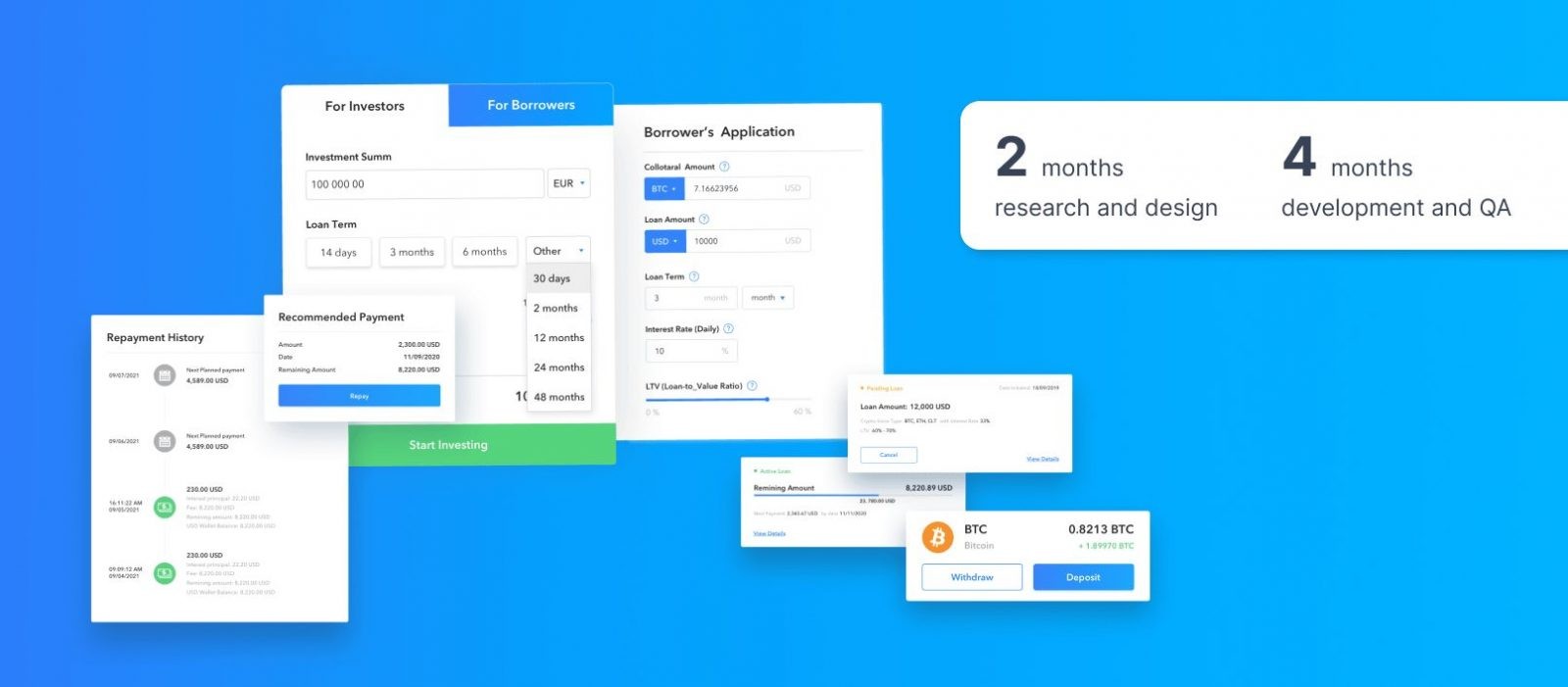
Project Outcomes
The clients got the following outcomes from Artkai's teamwork:
- An appealing, functional, and informative website
- An easy and worthwhile experience with an intuitive, comprehensive, and secure platform.
- Effortless and valuable experience
- Almost 100,000 users actively using the platform
SaaS Platform for the HR and Recruitment Teams in SME
Managing career websites and the candidate pipelines for each post is made easier with a SaaS named Cruitment. Creating and installing a new technological foundation to produce a long-lasting system that recruiters and job seekers might use and enjoy was one of our most significant duties.
Building a Product Development Roadmap
- Setting a Clear Goal for Product Development. To develop a new corporate identity and a SaaS with separate user flows for recruiters and job searchers.
- Assigning Tasks to Teams. The project was assigned to the Artkai team, which included an art director, a UI/UX designer, two front-end engineers, two back-end engineers, a solutions architect, a DevOps, a QA engineer, a project manager, and a business analyst.
- Frequently Monitoring and Updating the Roadmap. The Artkai team spent two months on research and design, four months on development, and a final two months on quality control.
- Adjusting Plans and Priorities as Needed. Following the research and discovery stage, we simultaneously worked on design and development.
- Starting with a Product Development Roadmap Template. To illustrate the development process, the team developed a template for a product development roadmap comparable to the one used in the ProCredit project.
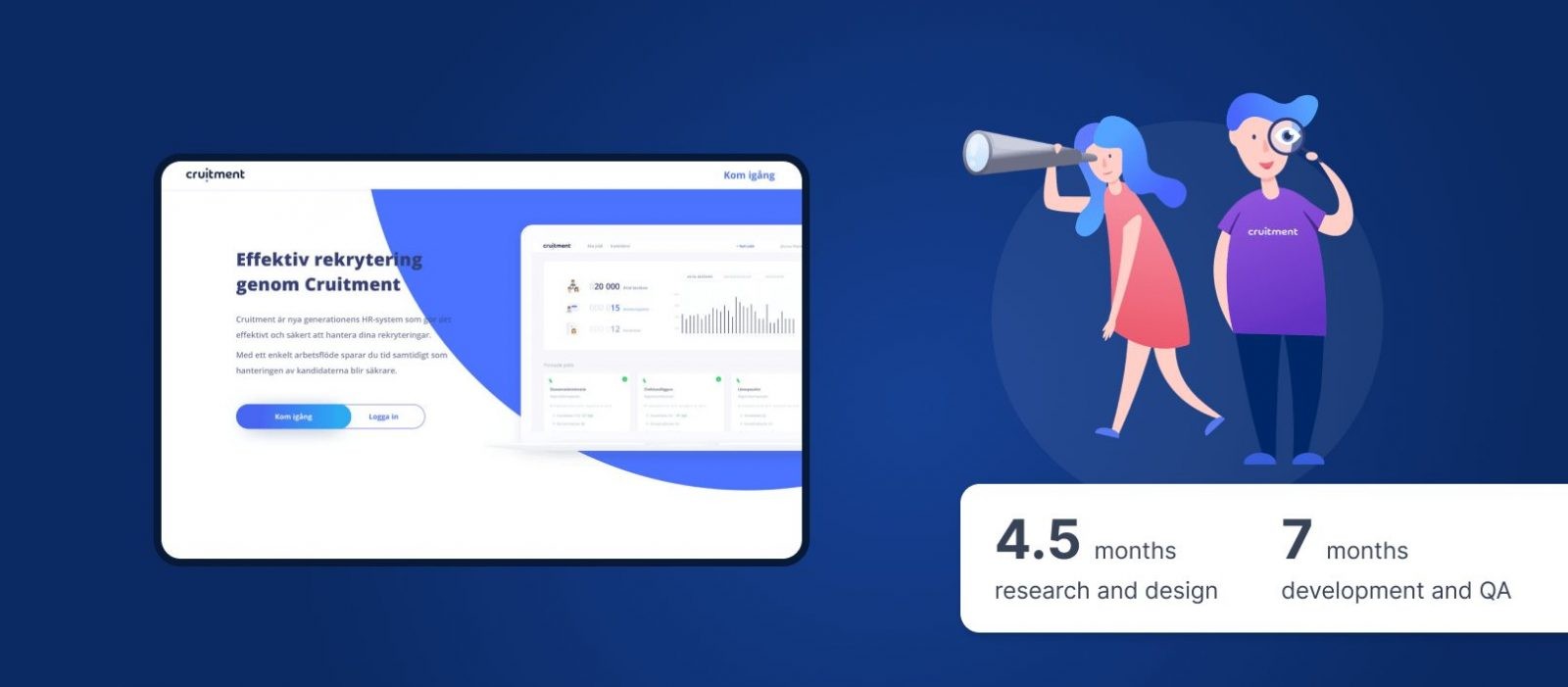
Project Outcomes
Our team designed the complete app architecture based on user needs and pain points. To develop valuable solutions and user flow, we collaborated extensively with stakeholders. Thus, we designed the functionality with the recruiters’ needs in mind. We also created a new brand identity to provide the platform and brand with a visual framework. Ultimately, we created a marketing website with various graphics and marketing materials.
The following are the results of the new recruitment platform and brand identity development:
- The number of applicants has tripled.
- The number of offers that were accepted has doubled.
- The average cost per application dropped by 1.5 times.
Mobile Trading Platform Huobi
The leading blockchain company in the world, Huobi Group, set out to study the European market and discover distinctive UX patterns and consumer pain points.
Building a Product Development Roadmap
- Setting a Clear Goal for Product Development. To create a customer-centric design, adapt the mobile application for a new European market, and create a promotional website for the European market.
- Assigning Tasks to Teams. Two UI/UX designers, a project manager, and a business analyst made up the Artkai team that worked on the project.
- Frequently Monitoring and Updating the Roadmap. We conducted face-to-face interviews with traders to learn more about how European audiences make decisions.
- Adjusting Plans and Priorities as Needed. After reviewing the data, our team compiled a list of insights for the platform.
- Starting with a Product Development Roadmap Template. The team used a template for a product development roadmap similar to the one used in the ProCredit project to demonstrate the development process.

Project Outcomes
Our team created a design system to meet the needs of the various age groups in the target audience. The Artkai specialists developed a mobile platform that allowed customers to manage business operations from any location and time and a marketing website for the European market. Thanks to our customer-centric UX design, the client reached the European market.
Upon completing the project, our client attained the following results:
- Turnover totaling $1,2 trillion.
- 50% of all digital assets worldwide.
- Millions of users in 130 countries.
Blockchain Prediction Market Protocol
The goal of Nezha was to create a web-based blockchain prediction market protocol for investors, innovators, and gamblers by allowing market players to only risk loss of profit without endangering the principal investment.
Building a Product Development Roadmap
- Setting a Clear Goal for Product Development. To provide a comprehensive solution that draws in investments, engages new users, is entertaining and transparent and keeps them coming back.
- Assigning Tasks to Teams. The project was worked on by Artkai's team, which included a solutions architect, a DevOps engineer, two UI/UX designers, two front-end engineers, two back-end engineers, two blockchain engineers, a QA engineer, a project manager, and a business analyst.
- Frequently Monitoring and Updating the Roadmap. The team conducted the research and design phase for three months, allocating seven months for development and quality assurance.
- Adjusting Plans and Priorities as Needed. We determined the market's needs during the research and product discovery phase. We based the product's features and functionality on the information received during the research process to make it more straightforward and usable. After the research and discovery phase, we finished the design and development phases in parallel.
- Starting with a Product Development Roadmap Template. The team used a product development roadmap template similar to the one used in the ProCredit project to show how the development procedure worked.
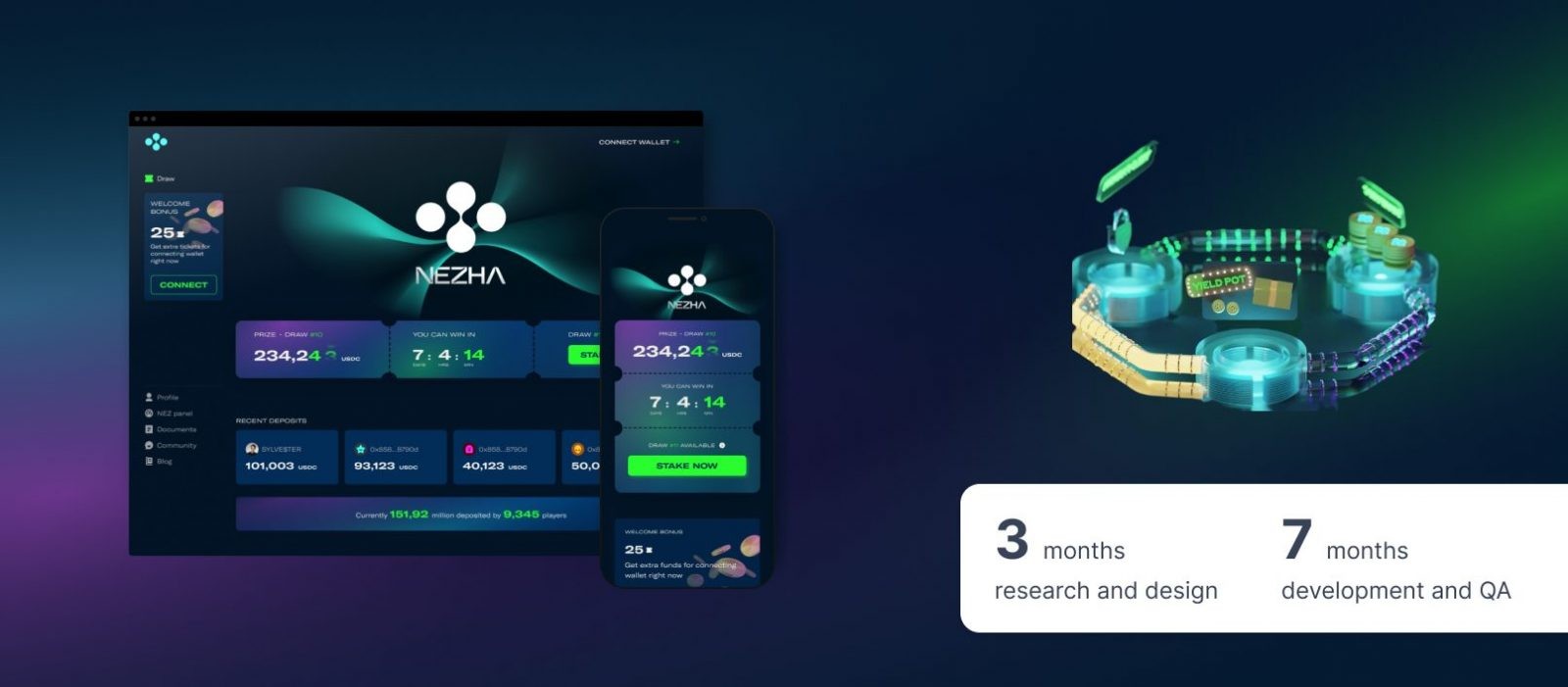
Project Outcomes
Without being excessively attached to the idea of traditional gambling, our designers were able to gamify the platform. We struck a compromise between the gaming industry and the manufacturability of the fintech market. To establish an instantly recognizable visual identity, we used vibrant neon highlights.
These findings have had some remarkable results:
- Product Discovery assisted in defining the project stakeholders' goals and streamlining the business process for retaining customers by providing better services.
- The result is a complex solution with intuitive navigation that increases platform utilization and conversions.
Digital Transformation for Energy Sector Enterprise
A Ukrainian power grid operator named DTEK sought to streamline the procedures for handling and paying electricity bills.
Building a Product Development Roadmap
- Setting a Clear Goal for Product Development. To transform a paper-based reporting system into an online account-based consumption and bill management system.
- Assigning Tasks to Teams. UI/UX designers, front-end engineers, back-end engineers, a SAP web services engineer, a solutions architect, a DevOps, two QA engineers, a project manager, and a business analyst made up the Artkai Team that worked on the project.
- Frequently Monitoring and Updating the Roadmap. We interviewed several target audience representatives and held an on-site workshop with the DTEK team to understand their business clients' objectives. After four months of research and design, our team worked for 12 months on development and quality assurance.
- Adjusting Plans and Priorities as Needed. After the research and discovery stage, design and development took place simultaneously.
- Starting with a Product Development Roadmap Template. To visualize how the product development process worked, the team used a product development roadmap template similar to the one illustrated in the ProCredit project.
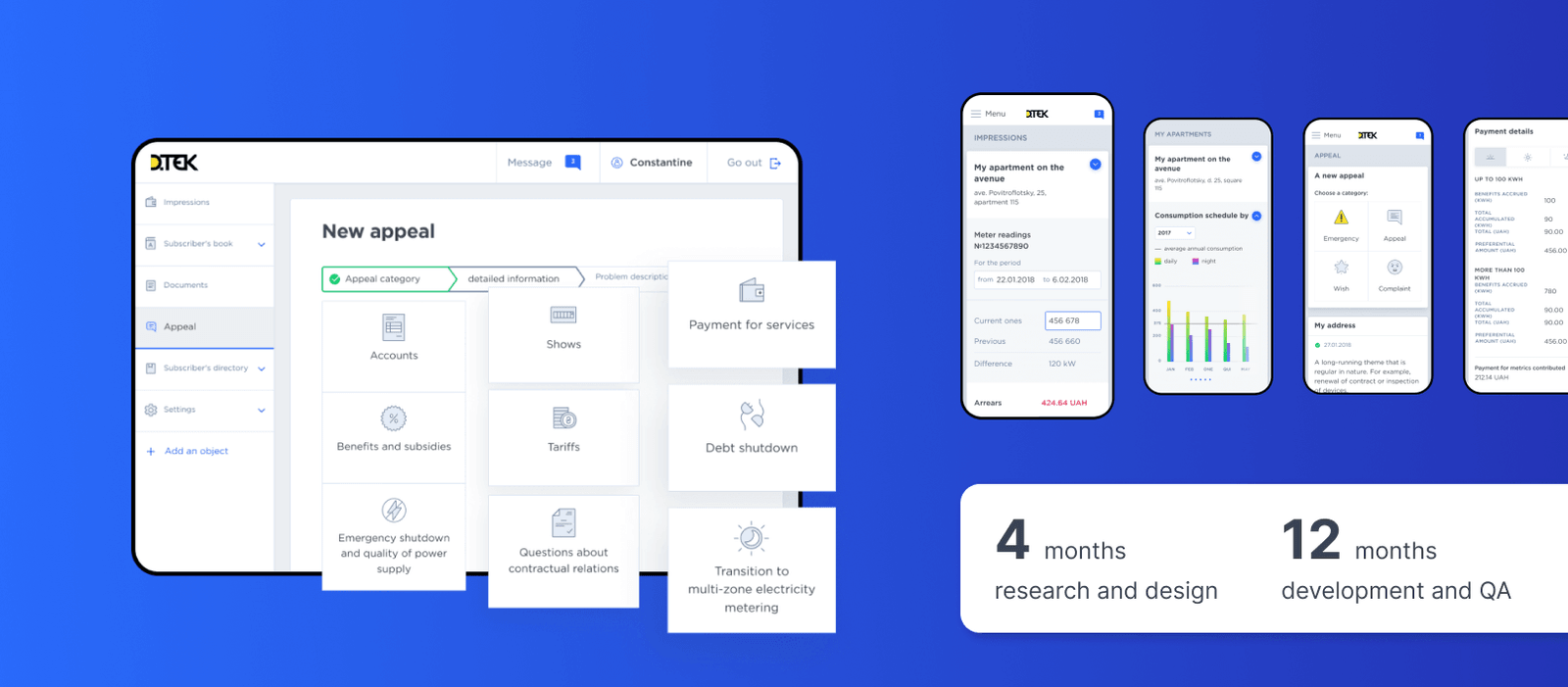
Project Outcomes
In accordance with the client's specifications, we developed a solution architecture that turned a paper-based reporting system into an online system for keeping track of consumption and paying bills.
DTEK got the results listed below:
- Increase in the number of contracts signed for electricity consumption.
- Three times fewer questions sent to the customer service department.
- An increase of 1.5 times in customer satisfaction.
Difference Between Product Development Roadmap and Product Roadmap
It is crucial to distinguish between the product roadmap and the product development roadmap. Both communicate how a company plans and thinks strategically about its product. The two, however, are distinct tools as each concentrates on a particular element of the product's approach.
What is a product development roadmap? It is made to track and share milestones and development objectives for a specific product. It is organized into sprints by agile organizations and lasts over a shorter period, typically just a few months. Product development roadmaps are data-driven and emphasize deadlines and delivery schedules.
A product roadmap, on the other hand, is intended to chart a product's strategic vision and priorities across time. It highlights the main themes of the product, occasionally excluding dates to focus on critical strategic objectives. According to Gartner, the validity and credibility of a product roadmap with a time horizon of more than six months have been significantly reevaluated due to the rising usage of agile delivery approaches.
Process of Product Development Roadmap Creation
Through product development roadmaps, you can communicate the main goal, plans, and product features. Choose which elements to add based on your demands by emphasizing the strategic aspects, the resources, the features, etc. Let’s look at how to build a product development roadmap step-by-step.
Set a Clear Goal for Your Product's Development
The product development roadmap should be more than just a to-do list. For the product's ultimate success, each task on the roadmap must serve a strategic purpose. You and your team must establish a strategic goal for the roadmap before adding any items to it. Then, you can evaluate each item you want to include regarding how strategically it advances that aim.
Assign Tasks to Teams
Unless each element on a roadmap has a distinct owner, it won't aid in your team's product development. As a result, each owner will have accountability for completing the assignment within the specified timeline.
Frequently Monitor the Roadmap and Update as Needed
Product development roadmap needs to be flexible and adjustable to possible changes. You should regularly review your roadmap to ensure everyone is on track, as product development involves many shifting tasks and interdependencies.
Adjust Plans and Priorities as Needed
No complex project runs entirely as planned from beginning to end. When circumstances force you to, be ready to reallocate resources or alter your priorities. Also, to keep the product marketing efforts on track, you might have to transfer some of your resources to a higher-priority project.
Start with a Product Development Roadmap Template
Roadmaps for product development contain numerous short-term objectives and steps that may change regularly. It's a good idea to create a roadmap using a template from a program for creating roadmaps rather than manually creating a static document.
Product Development Roadmapping Tools
While it is simple to grasp the fundamentals of each stage in building a product development roadmap, it can be overwhelming to begin working on the project and creating this document. These days, various tools can offer a dynamic, interactive solution.
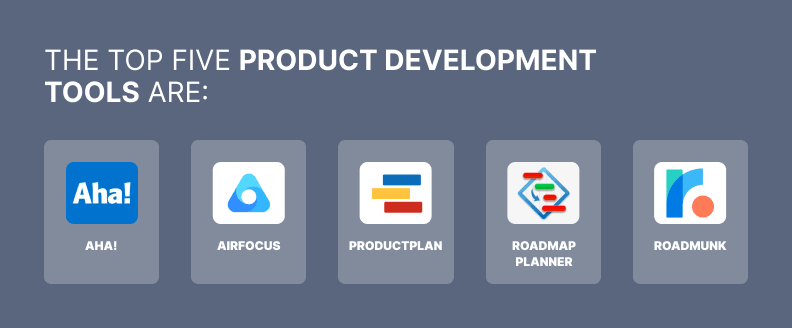
Aha!
It is one of the greatest roadmap tools, presently being used by over 250,000 teams. The tool offers six unique templates that can be customized to meet the needs of your team. It is an end-to-end project management solution that allows seeing the entire project lifecycle and includes integrating fundamental product manager capabilities with roadmapping features.
The platform provides a wide range of tools for, among other things, planning a marketing strategy, creating product strategy frameworks, managing releases, managing ideas, and managing portfolios.
AirFocus
The primary objective of this application is quick and straightforward roadmapping for successful product development. It offers integrations with several apps and a drag-and-drop interface that enables you to flip between various displays. It distinguishes itself by assisting teams in prioritizing and visualizing projects.
It differs from other solutions since it uses algorithms to rate things according to input, assisting teams in making the best product choices. As a result, Airfocus is your ideal choice if you're seeking the greatest RICE (Reach, Impact, Confidence, Effort) scoring roadmap tool.
ProductPlan
ProductPlan offers businesses a cost-effective way to develop product plans and roadmaps. It is the perfect roadmap tool for teams who prefer to have their projects laid out visually. Managers can use it to develop a visually appealing product roadmap and create and maintain project estimates.
Teams can produce distinct versions of the same roadmap for various audiences, distinguishing ProductPlan from other alternatives. It's the perfect choice for teams creating a sizable library of ready-to-use roadmap templates.
Roadmap Planner
A product roadmap program called Roadmap Planner focuses on communication and planning. Its drag-and-drop interface makes it simple to plan concepts and develop plans. The solution gives users access to tools for managing the entire team's product plan.
Teams that wish to keep track of the upcoming stages of their software product development can use Roadmap Planner. The platform also doesn't need to be connected to the internet. Most teams working on the planning stage of product development will find it valuable.
Roadmunk
With the aid of Roadmunk, you can create flexible roadmaps that quickly adjust to your needs. It is constructed around the Timeline, a standard roadmap, the Swimlane (Kanban board), and the Master Roadmap (high-level view). When creating entirely personalized roadmaps, Roadmunk is the classiest choice.
The Swimlane view gives scrum or agile teams access to a streamlined Kanban board, while the timeline view represents the standard/traditional product roadmap. The Master view, which integrates many product roadmap formats, allows teams to receive a comprehensive picture of the aspects of the product.
Ace Your Product Development Process with Artkai
A product development roadmap enables teams and stakeholders to review the product development process, understand the dependencies between various components and stages, and keep track of participants, tasks, and the project's overall progress. It visually represents a strategic plan that highlights the crucial steps to achieve the desired result.
Artkai, an award-winning full-cycle product development company, has proven expertise in using product development roadmaps to produce stunning digital products. Our product design services help businesses expand their user base and revenue streams, ensuring the success of their products.
Contact us to use Artkai's expertise to build a successful digital product.
Clients and Results
Schedule your free consultation
Don't miss this opportunity to explore the best path for your product. We are ready to delve into the specifics of your project, providing you with expert insights and optimal solutions.
Book your free sessionRead More
Explore articles from Artkai - we have lots of stories to tell
Join us to do the best work of your life
Together we advance the human experience through design.